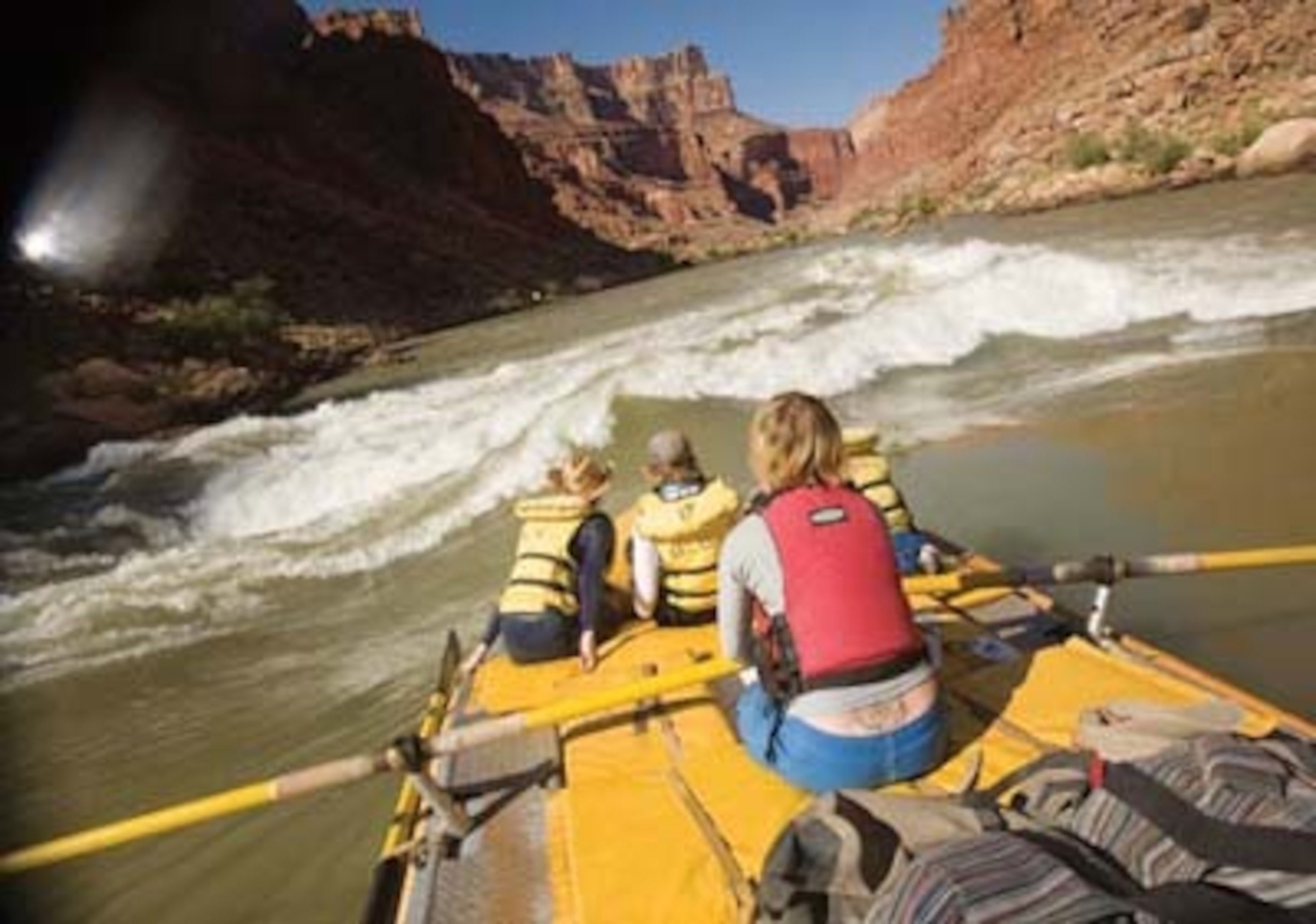
“Flushing” of Grand Canyon Causes Concern
If you haven’t yet taken a rafting trip down the Colorado River through the Grand Canyon, no doubt you want to before your days are done. In our national parks cover story last year, Contributing Editor Dan Duane wrote:
“To run the Grand Canyon on your own is one of the world’s genuine once-in-a-lifetime trips, a voyage that’s not only the best in our national parks—by a long mile—but also on par with walking the Inca Trail, trekking to Everest Base Camp, motorcycling across the Sahara, and sailing the South Pacific.”
On Wednesday (March 5), federal flood control managers released millions of cubic feet of water from Glen Canyon Dam to help restore the Big Ditch’s sandy beaches and pools for endangered species and campers. But, as reported by the L.A. Times, many are skeptical that this 60-hour surge, which will be followed by smaller flows this fall, is the right strategy:
“National park officials said that 10 years of research at a cost of $80 million had shown that the flooding as planned could irreparably harm the national park’s ecology and resources.”
We asked the Grand Canyon rafting experts at O.A.R.S. to weigh in on the debate. Here president and founder George Wendt and veteran river guide Michael Ghiglieri put the issue into context for adventure travelers.
George Wendt, President and Founder
The O.A.R.S. Family of Companies
The biggest problem with the "man-made flood" in the Grand Canyon that is now being produced involves the fact that the water being released by Glen Canyon Dam is clear and sediment free. This clear water can further scour any sediment in the Colorado River system between the dam and the Paria River. The Paria River, which is 15 miles below the dam, is the first real sand and silt contributor for the Grand Canyon.
Effectively, the river acts as a giant conveyor belt moving sediment downstream through the canyon. The sand and silt is always carried down river. This means that the beaches in the upper part of the Grand Canyon are getting smaller and smaller. In fact, many of them are disappearing.
Since the last high-water release from the dam in 2004, the Paria River and other tributaries have brought in more silt. The "flood" event being produced for three days this month will allow the Colorado River to pick up some of the sediment that has recently collected at the bottom of the river and then, when the river level is dropped, it will be able to deposit some of this sand and silt on beaches that need it.
Two other problems, however, then take their toll. Since Glen Canyon Dam is being used to generate power on a daily basis when maximum power is needed, the river level in the canyon fluctuates considerably on a daily basis. This daily "tidal" action then works to remove the new beaches that have just been built and again redistributes the sand and silt further down the canyon. Furthermore, during the rainy "monsoon" season during the summer, drainage from the canyon walls and side canyons can cut deep rivulets across the new beaches, further removing the sediment and transporting it down river toward Lake Mead, which is now over 1/3 full of silt.
The ultimate solution to the problem will most likely be to eventually do away with Glen Canyon Dam. With projections for a sustained reduction in the flows on the Colorado River over the next century, the river system most likely will be unable to maintain enough water for both Lake Powell and Lake Mead.
In the meantime, the experimental flows being released from Glen Canyon Dam probably won’t do too much damage. Meanwhile the big problem of the continuing beach degradation in the Grand Canyon continues almost every year.
***
Michael P. Ghiglieri, Ph.D.
Veteran O.A.R.S. Guide
- National Geographic Expeditions
The 41,000 cfs "flush" of early March 2008 is intended to scour and transport sediment up from the bed of the main channel of the Colorado—sand and silt carried into the canyon from the Paria and Little Colorado tributary drainages—and redeposit it atop the drastically eroded beaches throughout Grand Canyon. As the beaches disappear, campers and wildlife are left stranded and prehistoric ruins and other sorts of archeological sites are imperiled.
Before this current era of control, the old river naturally peaked at an average of 85,000 cfs every June and carried, on a yearly basis, an average of one million tons of sediment past Lee’s Ferry every two days. Footballs fields of these gigantic loads were deposited as beaches annually in summer; then they slowly eroded in part afterward.
This natural cycle has ceased due to the lack of sediment in the emerald-clear river released from Glen Canyon Dam. The Bureau of Reclamation’s operations have stripped most beaches bare of sand to a tiny fractions of their formal expanses and also simultaneously have facilitated jungles of exotic plant species (because they are no longer drowned annually) everywhere we don’t yank them out.
So, based on how high the natural, undammed river once flowed, the current "flush" is really only a half flush. I have rowed and paddled this river for nearly 35 years and at flows up to 96,500 cfs (in 1983). I have seen the gigantic and beautiful re-deposition of beaches at those levels. They are like day versus night compared to the results of the current efforts, which however anemic, are far better than doing nothing as Grand Canyon’s beaches vanish into the bottom of Lake Mead–and into history.
Photograph by Contributing Photographer Corey Rich
